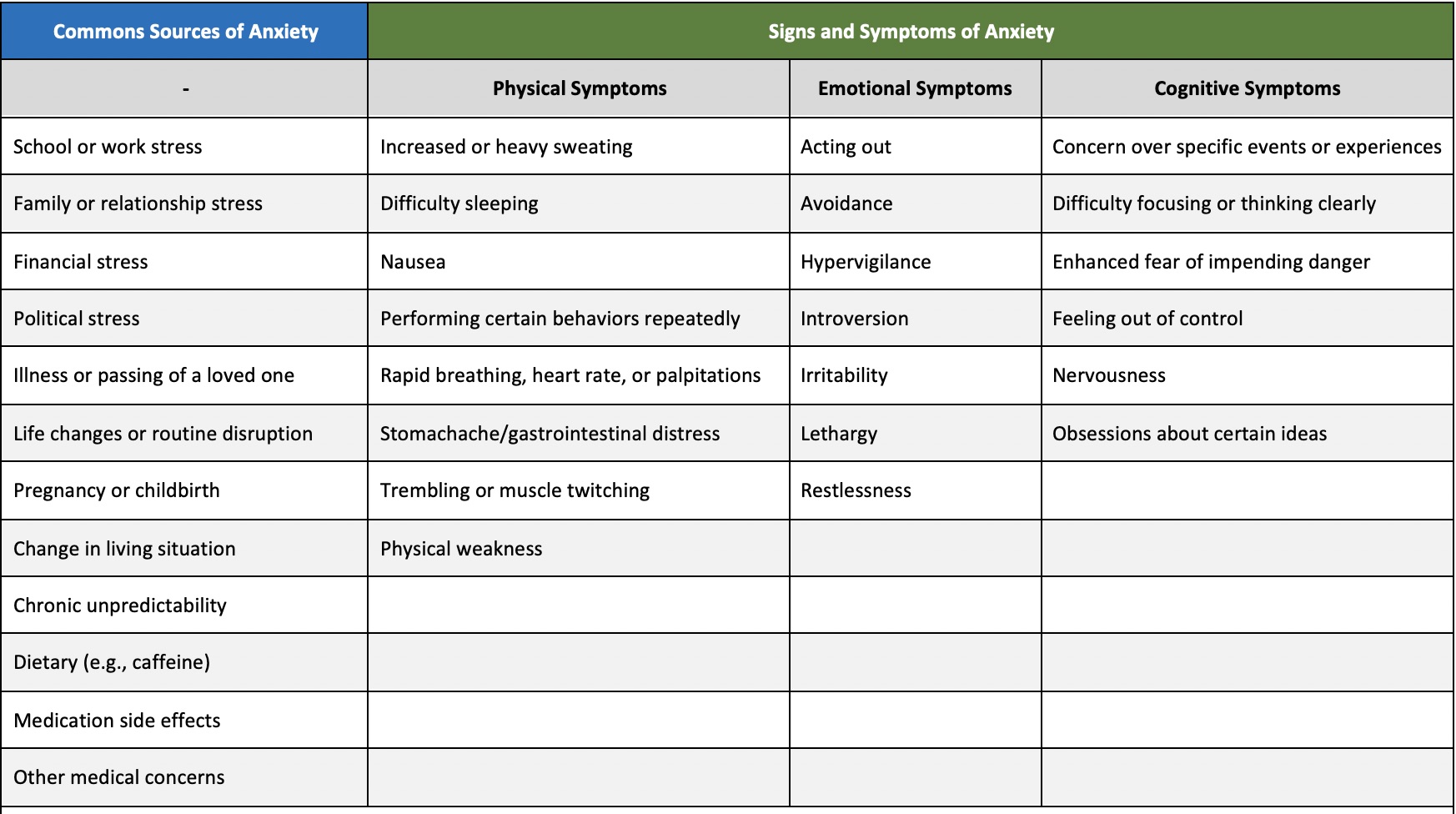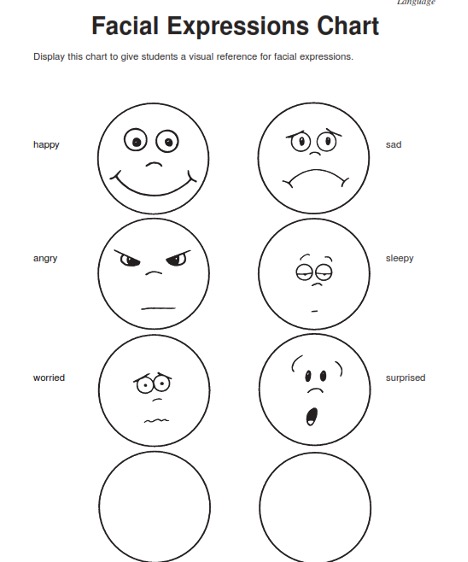Now that you’re aware of the sources and symptoms of anxiety, it’s easier to spot them when they appear in ourselves and those we care for. Be on the lookout for known anxiety triggers and the symptoms that may indicate a rising concern. When triggers or symptoms are identified, the in-the-moment strategies identified below can help restore calm.
These tactics are also useful for moments when symptoms increase to higher levels. When we’re in the grips of anxiety our mental processes can change dramatically. During these moments the part of our brain that processes emotions, the amygdala, is hyperactive, flooding the body with endorphins and overriding the cerebrum, which is the thinking part of the brain. In these moments it’s important we give permission to ourselves and those we love to not make big decisions or hold highly logical conversations until calm has returned. Doing otherwise will likely only make the experience worse. The best thing we can do in these moments is to attempt to restore tranquility to our mind and body.
In-the-moment strategies
- Take a quick mindfulness break. Mindfulness is a practice that can reduce stress and help you relate to your stress in a healthier way. Mindfulness is a quality we all possess and is a helpful tactic against anxiety for people of all ages. Even a 30 second mindfulness break can inspire renewed peace. Intermountain Healthcare offers free and convenient online meditation and mindfulness classes.
- Breathing exercises. Long, slow deep breaths lower heart rate and provide a greater sense of a calm, a helpful antidote to the Fight or Flight response induced by anxiety. Try these simple breathing techniques to improve symptoms and start feeling better.
- Count to 10 slowly
When you feel or observe anxiety rising, find a peaceful place to sit. Close your eyes and slowly count to 10 in time with your breathing. If necessary, slowly count backyards to zero and repeat if necessary until you feel your anxiety subsiding.
Example:
Slow inhale through the nose: “One”
Slow exhale out the mouth: “Two”
Slow inhale through the nose: “Three”
- Take a walk. Psychologists have demonstrated that even a 10-minute walk can swiftly improve your mood. Though benefits may be temporary, the act of walking (or other simple physical activities) can offer several hours of relief and renewed resilience.
Lifestyle strategies
- Get plenty of sleep and exercise. Sleep and exercise reduce stress and fatigue and improve concentration and alertness. In addition to reducing tension and elevating mood, rest and physical activity are wholly beneficial for other elements of your wellness, including improved cardiovascular health, weight control, and strengthening your immune system.
- Develop a balanced diet. Diet can play a helpful role in anxiety management. Healthy, balanced meals with ample fruits, veggies, proteins, and complex carbohydrates can help maintain energy and focus throughout the day. Staying hydrated and avoiding excessive caffeine and sugar is also helpful. High doses of caffeine are known to induce anxiety symptoms, while added sugar can cause spikes and crashed in energy and mood.
- Monitor alcohol and substance use. Stress and anxiety can encourage coping through alcohol and/or recreational drugs. Alcohol sales have increased as much as 262% during the COVID-19 pandemic, prompting the World Health Organization to warn that excessive alcohol use during the pandemic may potentially exacerbate health concerns and risk-taking behaviors. Similar coping tactics have been noted for cannabis. Some studies show relieving effects of such use, yet research published in 2020 indicated that relief may be only temporary and that long-term use of recreational cannabis to cope may ultimately relate to higher levels of depression. Until additional research can provide clarity, it’s suggested you limit intake and speak to your physician about long-term coping strategies.
- Stay connected to what fulfills you. Determine and prioritize the activities that add positivity to your life and make conscious efforts to stay connected to the relationships that matter to you. Regularly set aside time for these sources of fulfillment and be present in those moments by reducing distractions such as phones, screens, or multitasking.
Ask for help when needed
It's ok to ask for help. Reach out to friends, family, or loved ones for support. Not only can this help you manage and navigate your own anxiety, it may unknowingly open the door for them to share similar experiences or tactics.
Intermountain’s Behavioral Health Navigation Service is available for anyone in need of free emotional support, self-care tools, treatment options, crisis services, and more at (833) 442-2211 from 7 a.m. to 7 p.m., 7 days a week.

